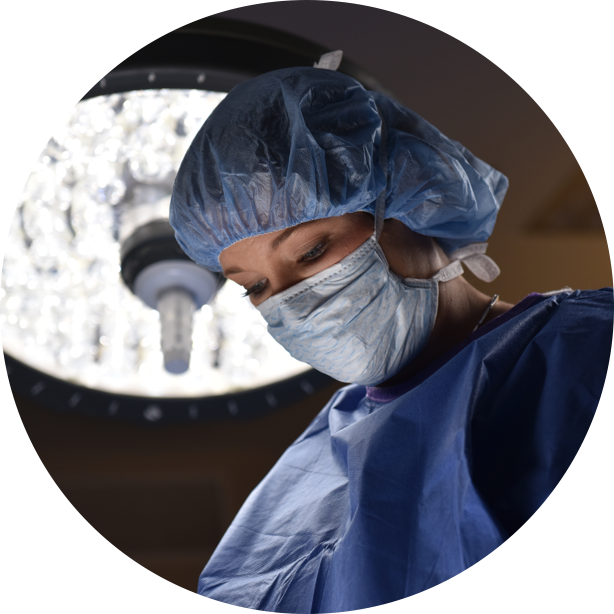
Facial Skin Cancer Reconstruction
According to the Skin Cancer Foundation, 3.3 million people in the United States receive treatment for a non-melanoma skin cancer every year. Many people require skin cancer removal in more than one area of their body, which explains the 5.4 million procedures annually. Non-melanoma skin cancers include basal cell carcinoma and squamous cell carcinoma. Although they are rarely life-threatening, up to 97 percent of people develop these skin cancers on highly visible parts of the body. Unfortunately, the face is the most common area for non-melanoma skin cancer.
Isn’t it time to take the next step?
CONTACT US
UPMC Western Maryland Plastic Surgery
12502 Willowbrook Road, Suite 460
Cumberland, MD 21502
Hours of Operation:
UPMC Outpatient Center
23789 Garrett Highway
McHenry, Maryland 21541
Hours of Operation:
HELPFUL LINKS

What is Mohs Surgery?
Mohs micrographic surgery is named for Frederick Mohs, the doctor who developed it in the 1930s. However, it wasn’t widely used until the 1970s and 1980s when a dermatologist in New York and the founder of the Skin Cancer Foundation refined the procedure. Mohs surgery has become especially popular in the last 15 years, particularly to remove basal cell and squamous cell cancer on the neck and head.
This procedure differs from tumor excision because a doctor performs it in stages. He or she starts the Mohs surgery by providing the patient with anesthesia and then using a scalpel to remove the smallest possible layer of visible cancerous tissue. The patient is then discharged to the waiting room. A laboratory technician freezes the tissue and cuts it into tiny sections to look for any remaining cancer cells. The doctor calls the patient back into the room and repeats the procedure if any cancer remains present. If not, he or she is free to go home. Not all patients require a Mohs resection.
Options for Reconstructive Surgery on the Face After a Mohs Procedure
Mohs surgery removes the cancer but can also leave the patient disfigured. It’s safe to pursue reconstructive plastic surgery once the bandages from the original surgery come off. Patients at Western Maryland Health System meet with Dr. Emme Jackson to determine which reconstructive procedure is right for them. Typical surgical procedures for facial skin cancer reconstruction include:
- Cartilage Grafting: While the ear is the most common donor site for cartilage grafting, it can also come from a rib.
- Flap Technique: This involves either a local flap or a free flap. Local flaps are further classified into advancement, rotation, transposition, and interpolation. All local flaps involve freeing and rotating nearby tissue to cover the area left exposed by Mohs surgery. The tissue remains attached to the patient’s body and its blood vessels pass through the donor site to enter the flap.
- Tissue Expansion: In this procedure, Dr. Jackson places a silicone balloon extender under the skin near the area of the Mohs surgery. She then fills it with saltwater, which causes the skin to stretch and grow over the original surgery site.
- Skin Graft: With a skin graft, Dr. Jackson removes healthy skin from a less visible area of the body, stitches it up, and then transfers it to cover the area where the patient had skin cancer removed. Tissue expansion and skin grafting are not used as much with skin cancer facial reconstruction as they are for other types of plastic surgery.
The Surgical Procedure for Facial Reconstruction
Dr. Jackson provides the patient with local anesthesia, general anesthesia, or intravenous sedation depending on the severity of the skin disfigurement and anticipated length of surgery. She then completes one of the procedures outlined above and closes the wound. During surgery, she takes special care to ensure that the suture line follows the natural curves and creases of the face as closely as possible to minimize scarring.

Schedule a Consultation

CONTACT US
UPMC Western Maryland Plastic Surgery
12502 Willowbrook Road, Suite 460
Cumberland, MD 21502
Hours of Operation:
UPMC Outpatient Center
23789 Garrett Highway
McHenry, Maryland 21541
Hours of Operation:
UPMC Western Maryland Plastic Surgery
Plastic Surgery With A Personal Touch
Western Maryland Medical Arts Center
12502 Willowbrook Road, Suite 460
Cumberland, MD 21502
UPMC Outpatient Center
23789 Garrett Highway
McHenry, Maryland 21541
